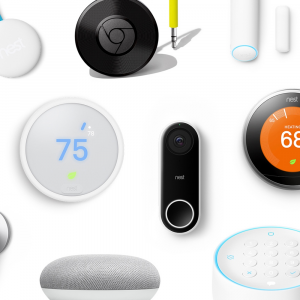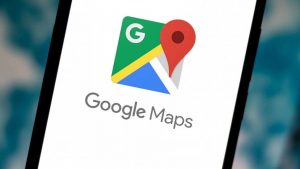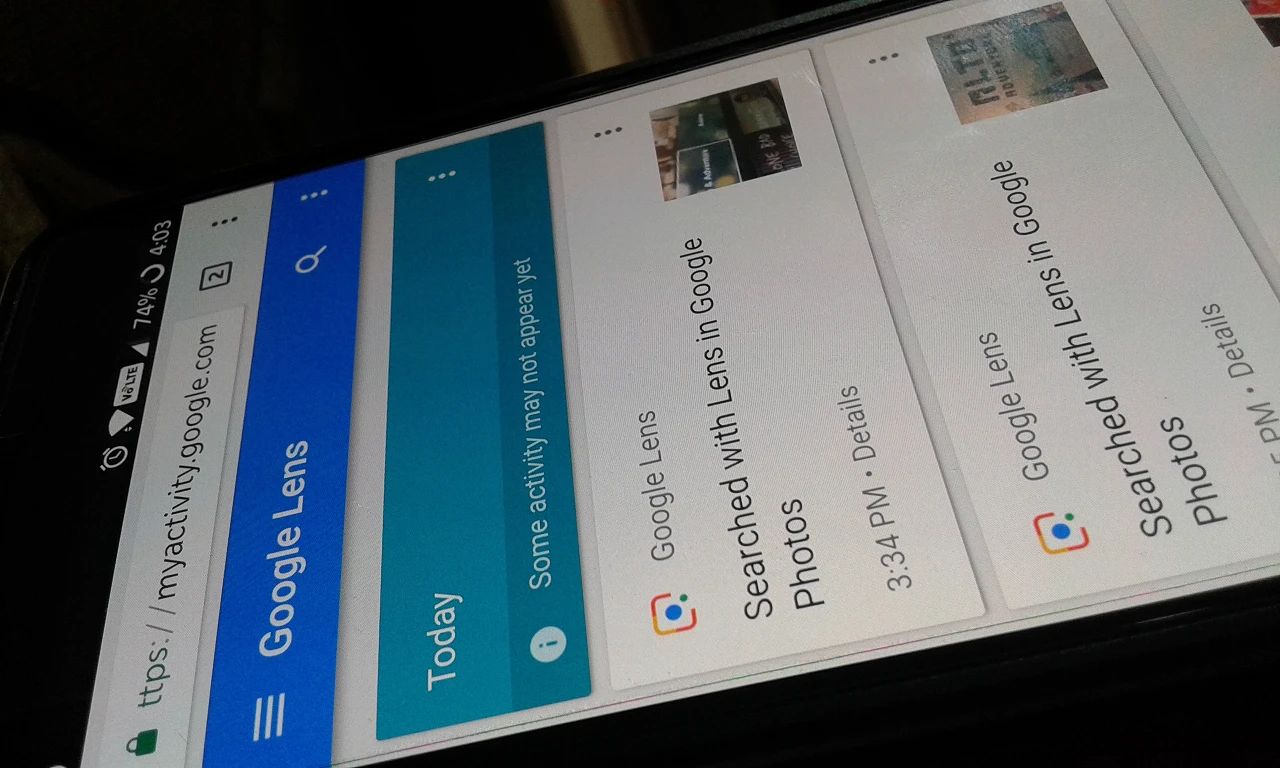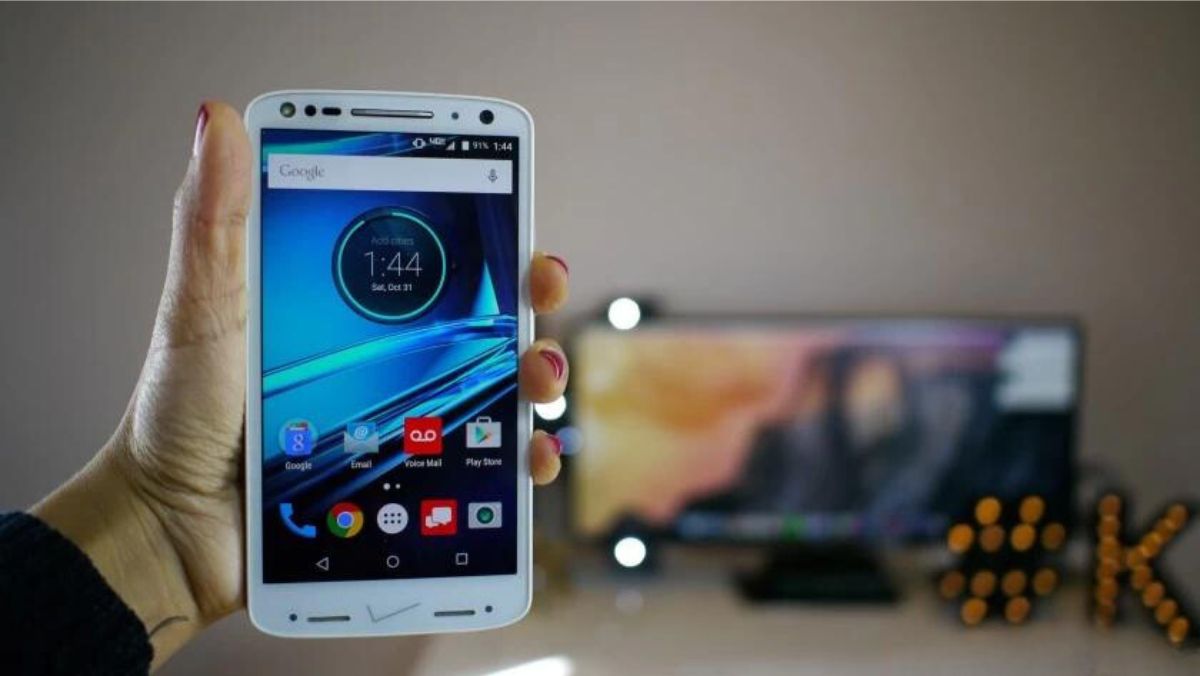Introduction
Google Photos is an innovative online photo management service that offers users a convenient way to store, organize, edit, and share their vast collections of digital photos. It provides a seamless experience across various devices, such as smartphones, tablets, and computers, making it a go-to platform for millions of users worldwide.
With Google Photos, users can upload their photos and videos to the cloud, freeing up precious storage space on their devices. The intuitive interface and powerful search capabilities make it easy to locate specific images or even discover forgotten memories. Additionally, the platform offers a wide range of editing tools to enhance photos and create artistic effects.
One of the standout features of Google Photos is its advanced artificial intelligence (AI) capabilities. The platform automatically categorizes and organizes photos based on people, places, and objects, allowing users to search for specific elements effortlessly. Moreover, Google Photos employs AI algorithms to create collages, animations, movies, and other personalized content, adding a touch of magic and fun to the photo management experience.
Privacy and security are paramount for any online service that deals with personal photos, and Google Photos takes this responsibility seriously. The platform provides users with full control over their photos, allowing them to choose who can view and access their shared albums. Additionally, Google Photos employs industry-standard security measures to safeguard users’ photos and ensure their confidentiality.
In this article, we will explore the ins and outs of Google Photos, from its core features to its AI capabilities and privacy controls. Whether you are a casual photo enthusiast or a professional photographer, understanding how Google Photos works can help you make the most of this powerful tool and seamlessly manage your ever-growing photo collection.
What is Google Photos?
Google Photos is a cloud-based photo management service developed by Google. It serves as a centralized platform for storing, organizing, editing, and sharing digital photos and videos. The service was launched in 2015 and quickly gained popularity due to its user-friendly interface and impressive feature set.
One of the primary advantages of Google Photos is its storage capabilities. It offers users unlimited free storage for high-quality photos and videos. This means that users can upload as many photos and videos as they want without worrying about running out of storage space on their devices. However, it’s important to note that there is a limit for storage of original-quality photos, which counts towards users’ Google Drive storage quota.
Another standout feature of Google Photos is its seamless integration across different devices and platforms. Users can access their photo library from their smartphones, tablets, and computers, ensuring that their memories are always within reach. The service is available as a mobile app for both iOS and Android devices, as well as through a web interface.
Google Photos offers a range of tools and features to help users effectively manage their photo collections. The platform automatically backs up photos and videos from users’ devices to the cloud, eliminating the risk of data loss due to device failure or accidental deletion. It also provides powerful search capabilities, allowing users to find specific photos based on people, places, objects, or even specific events.
In addition to its storage and organization features, Google Photos offers a variety of editing tools to enhance photos. Users can crop, adjust brightness and contrast, apply filters, and even create collages and animations. These editing features allow users to take their photos to the next level without the need for additional software.
Sharing photos and albums with others is also made easy with Google Photos. Users can create shared albums and invite others to contribute photos, making it a great tool for collaborative projects or sharing memories with friends and family. The platform also provides options for sharing photos via links or through popular social media platforms.
Overall, Google Photos is a powerful and reliable photo management service that offers users a convenient way to store, organize, edit, and share their photos. With its user-friendly interface, unlimited storage, advanced search capabilities, and powerful editing tools, Google Photos has become a go-to platform for many individuals looking to manage their digital memories effectively.
How to Use Google Photos
Using Google Photos is incredibly straightforward and user-friendly. Whether you’re a beginner or an experienced user, here’s a step-by-step guide on how to make the most of this powerful photo management platform:
- Download and Install the Google Photos App: Start by downloading the Google Photos app from the App Store (for iOS) or Google Play Store (for Android) and install it on your device. If you prefer, you can also access Google Photos through its web interface on your computer.
- Sign In or Create a Google Account: Once the app is installed, sign in to your existing Google account or create a new one if you don’t have one already. This account will be used to store and sync your photos across devices.
- Set Up the Backup and Sync Settings: After signing in, you’ll be prompted to enable backup and sync. This feature automatically uploads and backs up your photos and videos to the cloud, ensuring they are safe and accessible from any device. You can choose to enable backup only on Wi-Fi or allow backup using cellular data as well.
- Explore the Home Screen: Once setup is complete, you’ll be taken to the home screen of Google Photos. Here, you’ll find your entire photo library organized by date. Scroll through the timeline to browse through your photos or use the search bar to find specific images.
- Manage and Organize Your Photos: Google Photos automatically organizes your photos based on date, location, and subject matter. However, you can also create albums to group related photos together. To do this, select the photos you want to include, tap the three-dot menu in the top right corner, and choose “Add to album.” Give your album a name and customize it with a cover photo.
- Edit and Enhance Your Photos: Google Photos offers a range of editing tools to improve the quality of your photos. Select a photo, tap the edit icon (pencil), and you’ll have access to features like cropping, applying filters, adjusting brightness and contrast, and much more. Experiment with these tools to unleash your creativity and make your photos shine.
- Share Your Photos and Albums: Sharing photos and albums with others is a breeze with Google Photos. Select the photos or albums you want to share, tap the share icon (square with an upward arrow), and choose your preferred sharing method. You can share via direct message, email, social media, or by generating a link that can be sent to anyone.
- Discover Stories and Assistant Suggestions: Google Photos also offers a feature called “Assistant” that automatically creates collages, animations, and stories from your photos. These suggestions can be found in the Assistant tab and can be customized and shared as desired.
- Free Up Device Storage: With Google Photos taking care of storing your photos in the cloud, you can free up valuable space on your device. Once you’re confident that your photos are safely backed up, you can delete them from your device’s storage to make room for more pictures and apps.
Now that you have a basic understanding of how to use Google Photos, you can start managing and organizing your photos with ease. Experiment with the various features and tools available to personalize your photo library and make your cherished memories even more special.
How Does Google Photos Backup Work?
Google Photos backup is a key feature that ensures your precious photos and videos are securely stored in the cloud, providing peace of mind and accessibility from any device. Here’s how the backup process works:
Automatic Backup: When you enable backup and sync in the Google Photos app, the application automatically starts uploading and backing up your photos and videos to your Google account. This process ensures that your media files are safely stored in the cloud without the need for manual intervention.
Upload Quality Options: Google Photos offers two upload quality options: “High Quality” and “Original Quality.” With the “High Quality” option, Google automatically compresses your photos and videos to save storage space while maintaining a high level of quality. This option provides unlimited storage space for free. On the other hand, the “Original Quality” option allows you to upload files in their original resolution and quality, but it is counted towards your Google Drive storage quota.
Wi-Fi and Cellular Data Usage: By default, Google Photos is set to backup your media files using Wi-Fi only, preserving your cellular data. However, you have the option to enable backup over cellular data if you want to upload files when connected to a mobile network. It’s important to keep in mind that enabling backup over cellular data may result in additional data charges from your mobile service provider.
Continuous Backup: As long as you have an internet connection, Google Photos will continuously backup and sync your photos and videos. This means that any new media files on your device, as well as any changes made to existing files, will be automatically uploaded and reflected in your Google Photos library.
Multiple Device Syncing: Google Photos allows you to access and manage your photo library across multiple devices. As you capture new photos or videos on one device, they will automatically sync with your other devices, ensuring that your entire collection is up-to-date and accessible from any platform.
Storage Optimization: To optimize storage usage on your device, Google Photos offers a “Free Up Space” feature. This feature identifies media files that have already been backed up to the cloud and are no longer needed on your device. It then gives you the option to remove them, freeing up storage space for new content.
Restoring Backed-Up Photos: If you accidentally delete a photo or video from your device, fear not. Google Photos keeps a backup of all your media files. You can easily restore deleted photos by accessing the “Trash” or “Bin” folder in the app, where you’ll find all the deleted photos and videos for a duration of 60 days.
By utilizing Google Photos backup, you can ensure the safety and accessibility of your entire photo and video collection. The automatic backup process saves you the hassle of manually transferring files and provides peace of mind that your precious memories are securely stored in the cloud.
Understanding Google Photos Storage
Google Photos offers users a range of storage options to accommodate their photo and video collections. It’s essential to understand these storage options to make the most of your Google Photos experience. Here’s an overview:
High-Quality Storage: Google Photos provides users with unlimited free storage for photos and videos in “High Quality.” With this storage option, your media files are compressed to reduce their file size while maintaining a high level of visual quality. This option is the default setting and offers the most convenient way to store and access your photos and videos without worrying about storage limits.
Original Quality Storage: If you prefer to maintain the original resolution and quality of your photos and videos, Google Photos offers an “Original Quality” storage option. However, using this option will count towards your Google Drive storage quota. It’s important to note that Google provides 15 GB of free storage shared across Google Drive, Google Photos, and Gmail. Beyond the 15 GB limit, you may need to purchase additional storage from Google to accommodate your storage needs.
Storage Optimization: Google Photos provides a tool called “Free Up Space” that helps you optimize the storage on your device. When enabled, this feature identifies photos and videos that have already been backed up to the cloud and offers to remove them from your device. This frees up valuable storage space, allowing you to capture new memories without worrying about running out of space.
Storage Management: To keep track of your storage usage in Google Photos, you can visit the “Settings” section of the app or web interface. Here, you’ll find a breakdown of how much storage space is being used by photos and videos in “High Quality” and “Original Quality.” You can also purchase additional storage if needed and manage your overall storage settings from this section.
Third-Party Storage Solutions: In addition to Google Photos’ own storage options, you can also integrate the platform with other cloud storage providers. For example, you can link your Google Photos account to your Dropbox or Microsoft OneDrive, allowing you to back up your photos to these alternative storage platforms as well.
Archiving Photos: If you want to organize your photo library by hiding certain images from the main view, Google Photos offers an “Archive” feature. Archiving a photo removes it from the main library while keeping it easily accessible via the “Archive” section. This is a useful feature to keep your library clutter-free while still retaining access to photos you want to keep.
Understanding the storage options available in Google Photos helps you manage your photo and video collections effectively. Whether you choose unlimited “High Quality” storage or the “Original Quality” option with additional storage, Google Photos provides a flexible solution to fit your needs and ensure your media files are safe, accessible, and organized.
How Google Photos Organizes Your Photos
Google Photos employs advanced algorithms and artificial intelligence (AI) capabilities to automatically organize and categorize your photos. This powerful organization system allows for quick and easy access to the specific photos you’re looking for. Here’s how Google Photos organizes your photo library:
Automatic Categorization: When you upload photos to Google Photos, the platform uses AI to analyze and categorize your images based on various factors such as people, places, objects, and events. This automatic categorization makes it easier to search for specific images without needing to manually tag or label them.
People Recognition: Google Photos uses facial recognition technology to identify and group photos of specific individuals. After analyzing the faces in your photos, the platform creates “People” albums for each recognized person, allowing you to quickly locate and browse photos of specific individuals.
Visual Search: Google Photos offers powerful visual search capabilities, allowing you to find specific objects, places, or even text within your photos. For example, you can search for “beach” to find all your photos taken at the beach or search for “dog” to find photos of your furry friends.
Location Tagging: Using the metadata embedded in your photos, such as GPS coordinates, Google Photos automatically tags and organizes your photos based on location. This feature allows you to easily browse photos from specific places, including vacations, landmarks, or even your favorite restaurants.
Event Grouping: Google Photos also groups photos taken during the same event or occasion, such as birthdays, weddings, or vacations. By analyzing the date, time, and location information associated with your photos, the platform intelligently creates albums or collages, making it easy to reminisce about special moments.
Time-Based Organization: Your photos in Google Photos are displayed in a chronological order, presenting them in a timeline format starting from the most recent to the oldest. This makes it convenient to browse through your memories and see how they have evolved over time.
Manual Album Creation: In addition to the automatic organization, you have the freedom to create your own albums to group specific photos together. Whether you want to create an album for a special occasion or compile your favorite photos, the manual album creation feature allows for a personalized and curated photo collection.
Archive for Organization: If you want to keep certain photos out of the main view but still have easy access to them, you can archive them in Google Photos. This feature allows you to declutter your library by hiding specific images while keeping them accessible in the “Archive” section.
Thanks to Google Photos’ advanced organization system, you can quickly and effortlessly find the photos you’re looking for. From automatically categorizing photos by people, places, and objects, to providing powerful visual search capabilities, Google Photos takes the hassle out of organizing and locating your precious memories.
Search and Discovery Features in Google Photos
Google Photos offers a range of search and discovery features that make it easy to find specific photos and discover forgotten moments. These features utilize advanced artificial intelligence (AI) capabilities to analyze and categorize your photos. Here’s a closer look at the search and discovery features in Google Photos:
Visual Search: Google Photos uses AI algorithms to analyze the visual content of your photos. This enables you to perform visual searches, allowing you to find specific objects, places, or even text within your photos. Simply enter a keyword or phrase in the search bar, and Google Photos will display relevant results based on the visual analysis of your photos.
Facial Recognition: Google Photos employs powerful facial recognition technology to identify and group photos of specific individuals. By analyzing the faces in your photos, Google Photos creates “People” albums for each recognized person. This makes it easy to locate and browse photos of specific individuals, making it a breeze to find photos of friends, family members, or even yourself.
Automatic Categorization: When you upload photos to Google Photos, the platform automatically categorizes them based on various factors such as people, places, objects, and events. Google Photos uses AI to analyze the content of your photos and assign relevant labels and tags. This allows you to quickly find specific categories of photos without the need to manually tag or organize them.
Location-Based Search: Google Photos utilizes the location data embedded in your photos (such as GPS coordinates) to organize and allow for location-based searches. You can search for specific places, such as landmarks or vacations, and Google Photos will display all the photos taken at those locations. This feature makes it simple to explore and relive your memories from different places.
Time-Based Search: Google Photos organizes and displays your photos in chronological order, allowing for easy time-based searches as well. You can search for photos taken during a specific time frame, such as a specific month or year. This makes it convenient to reminisce about past events or see how your memories have evolved over time.
Object-Based Search: With Google Photos, you can perform searches based on specific objects or subjects. For example, you can search for “dog,” “beach,” or “birthday cake,” and Google Photos will display all the photos containing those objects. This feature makes it effortless to find photos that feature specific elements or themes.
Assistant Suggestions: The Assistant feature in Google Photos provides helpful suggestions and creations based on your photos. It automatically generates collages, animations, movies, and albums using your photos. These suggestions can be tailored and customized to your preference, allowing you to create personalized albums and videos with just a few taps.
Google Photos’ search and discovery features make it incredibly easy to find and rediscover your favorite photos and moments. Whether you’re searching for specific objects, people, or locations, or simply exploring the memories captured in your photo collection, Google Photos provides the tools to quickly and effortlessly browse through your digital memories.
Sharing Photos and Albums in Google Photos
Sharing photos and albums with others is a seamless and enjoyable experience with Google Photos. The platform offers various ways to share your cherished moments with friends, family, and even the world. Here’s how you can share your photos and albums in Google Photos:
Direct Sharing: In Google Photos, you can directly share individual photos with specific people. Simply select the photo you want to share, tap the share icon, and choose the contact you wish to share it with. You can share to individuals through email or messaging apps, making it easy to send photos to friends and family.
Creating Shared Albums: Google Photos allows you to create shared albums, which are collaborative albums that multiple people can contribute to. You can create a shared album by selecting multiple photos, tapping the share icon, and choosing the “Shared album” option. You can then invite others to contribute to the album by sharing a link or sending them an invitation via email or messaging apps.
Collaborative Photo Sharing: When you create a shared album, invited contributors can add their own photos and videos to the album. This makes it ideal for collaborative projects, shared experiences, or special events where multiple people want to contribute their photos. Everyone invited to the shared album can view, add, and comment on the photos, creating a dynamic and interactive photo-sharing experience.
Link Sharing: In addition to sharing photos directly with individuals and creating shared albums, Google Photos also provides the option to generate links for sharing photos or albums. You can generate a link for a specific photo or album and share it with anyone you choose. This option is particularly useful for sharing with a larger audience or posting photos on social media platforms.
Customizing Sharing Options: When sharing photos and albums, Google Photos allows you to customize the sharing options to suit your preferences. You can choose whether the recipients can view, comment on, or contribute to the shared content. You also have control over who can access the shared content, allowing you to share with specific individuals or make it publicly accessible to anyone with the link.
Shared Album Notifications: With Google Photos’ shared albums, notifications are sent to contributors whenever new photos are added or comments are made. This keeps everyone involved in the loop and allows for ongoing collaboration and communication within the shared album.
Discoverable Sharing: Google Photos also provides the option to make your shared albums discoverable by others. By enabling this feature, your shared albums can be discovered and viewed by anyone who has the link. This is a great way to showcase your photos to a wider audience or share them with a specific community.
Sharing photos and albums in Google Photos is a flexible and customizable process. Whether you’re sharing photos with specific individuals, creating collaborative albums, or making your photos discoverable to a wider audience, Google Photos offers the tools and features to easily share and enjoy your cherished moments with others.
Editing and Enhancing Photos in Google Photos
Google Photos provides a robust set of editing tools that allow you to enhance, transform, and personalize your photos. Whether you’re a casual photographer or a photo enthusiast, here’s how you can edit and enhance your photos in Google Photos:
Cropping and Straightening: Google Photos allows you to crop your photos to remove unwanted elements or to focus on a specific subject. Additionally, you can easily straighten photos that may have been taken at an angle, ensuring a balanced composition.
Adjusting Lighting and Color: You have precise control over adjusting the lighting and color of your photos in Google Photos. Use the “Auto” option for quick enhancements or manually tweak parameters such as exposure, contrast, highlights, shadows, saturation, and warmth to achieve the desired look.
Applying Filters: Google Photos offers a variety of filters that can completely transform the mood and aesthetic of your photos with a simple tap. Experiment with different styles to give your photos a unique and personalized touch.
Enhancing Details: The “Sharpen” tool in Google Photos allows you to enhance the details and clarity of your photos, making them appear sharper and more defined. This is particularly beneficial for highlighting small details, such as textures or intricate patterns.
Applying Presets: Google Photos provides a selection of preset adjustments that instantly apply a specific style or look to your photos. From black and white to vintage-inspired filters, these presets offer a quick and convenient way to enhance the overall appearance of your images.
Creating Collages and Animations: Google Photos allows you to create collages and animations using your photos. You can select multiple photos and let the platform automatically generate a collage or an animation, seamlessly blending your photos together for a fun and dynamic effect.
Convenient Undo and Redo: If you’re not satisfied with your edits, Google Photos makes it easy to undo or redo any changes you’ve made. This allows for non-destructive editing, ensuring that you can experiment with different adjustments without worrying about losing the original version of your photo.
Saving a Copy: When editing a photo, Google Photos preserves the original version and saves your edits as a separate copy. This means you can always revert back to the original photo if needed. It also allows you to create multiple edited versions of the same photo without the fear of losing the original.
Editing Videos: In addition to photos, Google Photos also offers basic editing functions for videos. You can trim the length of a video, stabilize shaky footage, and apply filters to enhance the overall look and feel of your videos.
Google Photos’ editing tools provide both simplicity and versatility, allowing you to customize your photos according to your unique vision and style. From basic adjustments to creative enhancements, Google Photos offers everything you need to bring out the best in your photos.
Google Photos Artificial Intelligence Features
Google Photos leverages the power of artificial intelligence (AI) to provide a range of innovative features that enhance the overall photo management experience. Through advanced algorithms and machine learning capabilities, Google Photos offers intelligent and automated functionalities. Here are some of the standout AI features in Google Photos:
Automatic Organization: Google Photos uses AI to automatically categorize and organize your photos based on various factors. It analyzes the content of your photos, such as people, places, objects, and events, and assigns appropriate labels and tags. This automated organization makes it effortless to locate specific photos without the need for manual tagging or labeling.
Facial Recognition: With advanced facial recognition technology, Google Photos identifies faces in your photos and groups them together. It automatically detects and creates “People” albums for individuals recognized in your photos. This enables you to quickly find and browse photos of specific people, making it convenient to reminisce about moments with friends and family.
Visual Search: Google Photos utilizes AI to analyze the visual content of your photos. This enables you to perform visual searches, allowing you to find specific objects, places, or even text within your photos. Simply enter a keyword or phrase in the search bar, and Google Photos will display relevant results based on the visual analysis of your photos.
Object Recognition: By leveraging AI capabilities, Google Photos can recognize objects within your photos. This allows for accurate categorization and easier searchability based on specific objects or subjects. Whether you’re looking for photos of your pets, cars, or landmarks, Google Photos can quickly identify and display the relevant images.
Assistant Suggestions: The Assistant feature in Google Photos utilizes AI to automatically generate suggestions and creations based on your photos. It can create collages, animations, movies, and albums using your photos. By analyzing your photos, Google Photos intelligently curates and suggests personalized content that reflects your unique memories and moments.
Album Creation and Storytelling: Google Photos’ AI helps in creating meaningful albums and visual stories. It automatically selects and combines photos based on similar attributes, such as location, date, or people, and creates albums or stories that capture specific events or time periods. This feature makes it enjoyable to revisit memories and share them with others.
Automatic Enhancements: Google Photos employs AI algorithms to automatically enhance the quality of your photos. It can improve lighting, color balance, and other aspects of your images for a better overall look. These automatic enhancements bring out the best in your photos without the need for manual adjustments, saving you time and effort.
Memory Collections: Google Photos can use AI to curate and present “Memories,” which are collections of related photos from your past. It selects meaningful moments, such as vacations or celebrations, and compiles them into a visually pleasing format. Memories offer a nostalgic way to revisit past experiences and share them with loved ones.
The AI features in Google Photos add a layer of intelligence and convenience to the photo management process. From automatically organizing and categorizing your photos to generating personalized suggestions and creations, the integration of AI technology enhances the overall functionality and user experience in Google Photos.
Google Photos Privacy and Security
Google Photos prioritizes user privacy and security, ensuring that your personal photos and videos remain protected. Here’s an overview of the privacy and security measures implemented in Google Photos:
Data Encryption: Google Photos employs industry-standard encryption protocols to protect your data. Both during transmission and while stored on Google servers, your photos and videos are encrypted to safeguard them from unauthorized access.
Account Security: Your Google account serves as the gateway to access and manage your Google Photos. Google provides robust security measures to protect your account, including two-factor authentication, which adds an additional layer of verification to prevent unauthorized access.
Access Control: Google Photos offers options for you to control who can view and access your shared albums. You can choose to share albums with specific individuals by sending invitations or generating private links. Additionally, you have the ability to remove access or revoke permissions from shared albums at any time.
Photo Recognition Controls: Google Photos’ facial recognition technology, while powerful, respects user privacy. Google has implemented strict policies and guidelines to ensure that facial recognition is performed securely and ethically. Users have the option to disable or opt-out of facial recognition in their Google Photos settings.
Deletion and Removal Options: Google Photos provides multiple options for removing photos from your library. You can choose to delete individual photos or entire albums, ensuring that unwanted or sensitive content is permanently removed. Moreover, Google Photos includes a “Trash” folder where deleted photos are stored for 60 days before being permanently deleted, allowing for possible recovery if needed.
Third-Party Integration: Google Photos can be integrated with other apps and services. However, Google ensures that the privacy and security of your photos are maintained even when using third-party applications. Your explicit consent is always required for any data sharing or integration with other services.
Data Usage Transparency: Google provides clear and comprehensive information about the data usage and storage policies of Google Photos. You can access the privacy settings and control the data shared with Google Photos. Additionally, Google offers transparency reports, allowing you to see how your data is handled and protected.
Anonymous Data Analysis: Google uses anonymized and aggregated data to improve its services and develop new features. This data is stripped of any personally identifiable information and is used solely to enhance the performance and functionality of Google Photos.
Google Photos is committed to maintaining the privacy and security of your personal photos and videos. With stringent encryption protocols, access controls, and clear data usage transparency, Google Photos ensures that your memories remain private and protected, allowing you to enjoy the platform with peace of mind.
Conclusion
Google Photos is a comprehensive and user-friendly platform that revolutionizes the way we manage, organize, enhance, and share our digital photos and videos. With its advanced artificial intelligence (AI) capabilities, Google Photos offers a range of powerful features that simplify the photo management process, making it a go-to choice for millions of users worldwide.
From the seamless backup and sync functionality to the automatic organization and categorization of photos, Google Photos streamlines the management and retrieval of our cherished memories. The platform’s search and discovery features, powered by AI, allow us to find specific photos effortlessly and even unearth forgotten moments, making our photo library more accessible and enjoyable to explore.
Google Photos also provides an extensive array of editing tools that enable us to enhance our photos by adjusting lighting, cropping, applying filters, and much more. With just a few taps, we can transform our images to make them truly stand out and reflect our artistic vision.
Privacy and security are paramount in Google Photos, ensuring the protection of our personal photos and videos. With robust encryption protocols, access controls, and transparent data usage policies, Google Photos gives us peace of mind when entrusting our memories to the platform.
In conclusion, Google Photos offers an exceptional photo management experience. Whether you’re a casual photographer, a professional, or simply someone who loves capturing and sharing moments, Google Photos provides the tools and features to organize, enhance, and share your photos with ease. With its AI-powered capabilities and intuitive interface, Google Photos is a powerful ally in preserving and reliving our cherished memories, allowing us to create, discover, and enjoy our digital photo collections like never before.

























